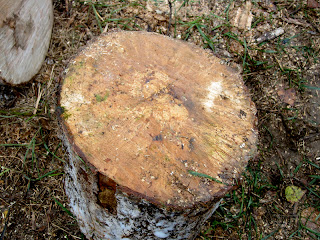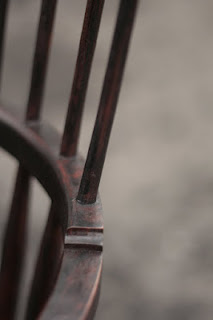Even in Kyoto--
hearing the cuckoo's cry--
I long for Kyoto.
Matsuo Basho
Here above you can see another arm chair. I really want to make a birdcage style ( with a double crest rail) but without an order it's tough to find the time.
This post is about fixing bending breaks. It's really pretty easy, the hardest part may be deciding which pieces can be glued and which have really broken and have to be discarded. Generally, it depends on the depth and direction that the break is running. If it's pretty deep, and is running in, then toss it. Also, if the break looks like it's peeling apart, layers coming off, it's probably ok to glue. But if it looks like a strait fracture, then better to discard.
I like to fix the stress fractures when the piece is freshly steamed, and thus green. Polyurethane (Gorilla) glue works great. Just work it into the break ( I use a feeler gauge ) and then wrap tightly with masons line and tape off. Once the piece dries, a card scraper cleans it off and you're all set.
I put the steamed pieces in my furnace room to dry. I have a floor fan blowing around and within a couple days the pieces are all set. I've been doing a bunch of steam bending lately, as you can see. Seen here are a few hoop backs and a couple of C-arm bends.
Here you can see the drying rack I like to use on hoop backs. It's a board with a couple blocks screwed to it that hold the ends. I then use a windlass to draw the hoop together, thus giving the hoop a slightly pinched look. I think it looks better, though I wonder sometimes if I am the only one who sees it. The board also keeps the ends in the same plane, which simplifies assembly. I have also been steaming my ash longer than usual, which does seem to be helping, about an hour.

















































